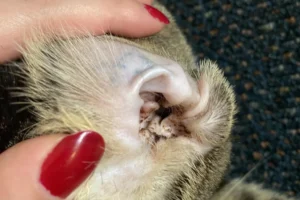Cats are beloved pets to many, providing companionship and entertainment. However, these cuddly felines also have a darker side – they are considered invasive species in many parts of the world. But why exactly are cats considered invasive? Let’s explore the reasons behind this controversial label.
History of Cat Domestication
Curious about how those fluffy felines ended up in our homes? Well, let me take you on a quick journey through the history of cat domestication. It all began around 4,000 years ago in Egypt, where cats were revered and even worshipped. These independent creatures were initially drawn to human settlements for the easy meals provided by rodents attracted to stored grains. Over time, humans realized the benefit of having these natural hunters around and started to tame them. Despite their cute demeanor today, cats still carry that instinct to hunt, which can pose a problem for local wildlife when they’re let loose outdoors.
Impact on Wildlife
Now, let’s talk about the detrimental effects that our beloved pet kitties can have on native wildlife. When feral or outdoor pet cats roam freely, they can wreak havoc on local ecosystems by preying on birds, reptiles, and small mammals. Research shows that cats are responsible for the decline of numerous species, some of which are already at risk. In fact, a single outdoor cat can kill hundreds of animals in a year, disrupting the delicate balance of nature. To protect our wildlife, it’s essential to keep our cats indoors or supervise them when they’re out and about.
- Keep Kitty Inside: One way to reduce the impact of cats on wildlife is by keeping them indoors. This not only protects local animals but also keeps your feline friend safe from potential dangers like traffic and other predators.
- Provide Enrichment: To satisfy your cat’s natural hunting instincts, create an enriching indoor environment with toys, scratching posts, and interactive play sessions. This can help prevent boredom and the urge to hunt wildlife.
- Spay and Neuter: By spaying or neutering your cat, you can help control the feral cat population, ultimately reducing the number of cats that pose a threat to wildlife.
- Support TNR Programs: Trap-Neuter-Return (TNR) programs are effective in managing feral cat colonies without resorting to euthanasia. By supporting these initiatives, you can help reduce the impact of feral cats on local wildlife while promoting humane solutions.
Cat Predation Behavior
Cats are natural-born hunters, with instincts honed over centuries to track and catch prey. Their predatory behavior is a significant factor in their classification as invasive species. Domestic cats, even well-fed ones, will instinctively hunt small animals like birds, rodents, and insects. This hunting behavior is detrimental to native wildlife populations, especially in areas where these animals are already facing threats from habitat loss and other human activities. Unlike some predators that hunt only out of necessity, cats often kill for sport, posing a serious risk to vulnerable species. This behavior can have a cascading effect on ecosystems, disrupting the delicate balance of local fauna. To tackle this issue, it’s essential for cat owners to keep their pets indoors or use deterrents such as collars with bells to reduce their impact on native wildlife.
Role in Ecosystem Disruption
Cats play a crucial role in disrupting ecosystems by preying on vulnerable species and upsetting the balance of local fauna. Their introduction into new environments can have a devastating ripple effect, causing declines in native animal populations and even leading to the extinction of certain species. In addition to direct predation, cats can indirectly impact ecosystems by spreading diseases to wildlife, further destabilizing fragile ecosystems. By targeting species that play key roles in maintaining ecosystem balance, such as pollinators or seed dispersers, cats can have far-reaching and long-lasting effects on biodiversity. To mitigate this disruption, it’s essential for communities to implement trap-neuter-release programs to control feral cat populations and prevent further damage to local ecosystems.
Spread of Disease
Cats, whether domestic or feral, can pose a significant threat as carriers of diseases that can harm both wildlife and human populations. Feral cats, especially, can spread diseases such as toxoplasmosis, cat scratch fever, and even rabies. Toxoplasmosis, transmitted through their feces, can infect birds and small mammals, impacting ecosystems. Cat scratch fever can be transferred to humans through scratches or bites. Additionally, cats can be reservoirs for rabies, a potentially deadly virus that can spread to other animals and humans through bites.
Challenges of Cat Management
Managing feral cat populations presents a unique set of challenges that make it difficult to control their impact on the environment. One obstacle is reproduction rates; a single female cat can produce multiple litters in a year, rapidly increasing the population. Trap-neuter-return programs aim to reduce populations humanely, but they require significant resources and are not always effective in eliminating the issue. Community awareness and involvement are also crucial in addressing feral cat populations, as education on responsible pet ownership can help prevent more cats from becoming strays.
- Establishing partnerships with local animal control and nonprofit organizations can help streamline efforts to manage feral cat populations.
- Promoting responsible pet ownership through spaying and neutering and identification methods like microchipping can prevent domestic cats from contributing to the feral population.
- Utilizing innovative solutions such as feral cat shelters and eco-friendly deterrents can help address the challenges of managing feral cat populations and minimize their impact on the environment.
The Debate on TNR Programs
Trap-Neuter-Return (TNR) programs are a hot topic when it comes to controlling feral cat populations. Advocates argue that TNR is a humane strategy that helps reduce the number of feral cats over time. By trapping cats, neutering or spaying them, then returning them to their colonies, TNR aims to stabilize populations without resorting to euthanasia. This method is said to be more effective than simply removing cats, as new ones often move in to fill the vacuum. Additionally, supporters claim that TNR can lead to healthier, less aggressive cats that are better able to coexist with wildlife.
On the other hand, critics of TNR programs raise concerns about their impact on ecosystems. They argue that even well-fed, neutered cats can negatively affect native wildlife populations by preying on birds, small mammals, and other animals. This predatory behavior can disrupt fragile ecosystems and lead to declines in vulnerable species. Additionally, some opponents of TNR believe that the resources allocated to these programs could be better spent on other approaches, such as managed colony reduction and public education campaigns.
Ultimately, the debate around TNR programs reflects the complex nature of managing feral cat populations and balancing the needs of cats with those of wildlife and ecosystems. Finding a solution that addresses the welfare of both cats and native species remains a challenge for communities facing issues related to feral cats.
Alternative Solutions
While TNR programs have their supporters and critics, it’s clear that addressing the issue of feral cat populations requires a multifaceted approach. Here are some alternative solutions to consider:
- Public Education: Increasing awareness about the impact of feral cats on ecosystems can help promote responsible pet ownership and reduce the number of cats that end up on the streets.
- Shelter and Adoption: Encouraging the adoption of feral cats that are socialized and ready for a home can provide a better outcome for these animals while also reducing the overall feral cat population.
- Community Collaboration: Working with local organizations, veterinarians, and volunteers to implement targeted trapping and relocation efforts can help manage feral cat populations in a more sustainable way.
- Habitat Restoration: Restoring and protecting natural habitats where native wildlife reside can create a healthier environment for these species and reduce the vulnerability of feral cats to disease and harsh conditions.
By combining these alternative solutions with existing TNR programs, communities can work towards a more comprehensive approach to addressing the challenges posed by feral cat populations while also promoting the well-being of native wildlife.
Fun Cat Facts
Did you know that cats are one of the top predators in most ecosystems they inhabit, making them skilled hunters? Their hunting instincts can lead to devastating effects on local wildlife when introduced to environments where they do not naturally belong. This behavior is a key reason why cats are considered invasive species.
Cats have a unique ability to communicate with humans through various vocalizations, body language, and even facial expressions. This communication skill has helped them become beloved pets around the world. However, when feral or stray cats become established in new areas, they can disrupt the balance of the ecosystem, threatening native species.
Contrary to popular belief, cats are not solely nocturnal animals. They are crepuscular, meaning they are most active during dawn and dusk. This adaptability in their activity patterns allows them to be effective predators at different times of the day, contributing to their successful spread as invasive species.
Cats are known for their excellent grooming habits, spending a significant amount of time cleaning themselves each day. While this behavior keeps them clean and healthy, it also allows them to move easily between different environments, aiding in their ability to colonize new territories and become invasive in certain regions.
One interesting fact about cats is their diverse range of vocalizations. From purring to meowing, chirping to yowling, cats have a wide repertoire of sounds to express their needs and emotions. This vocal communication can also attract other cats, leading to the establishment of feral colonies that can cause ecological harm in non-native habitats.
In conclusion, while cats may be charming and fascinating animals, their predatory nature and adaptability have unfortunately led to their classification as invasive species in many regions. It’s essential to understand these factors to address the challenges posed by feral and stray cats in ecosystems around the world.
Alex, a passionate animal lover, has experience in training and understanding animal behavior. As a proud pet parent to two dogs and three cats, he founded AnimalReport.net to share insights from animal experts and expand his knowledge of the animal kingdom.









